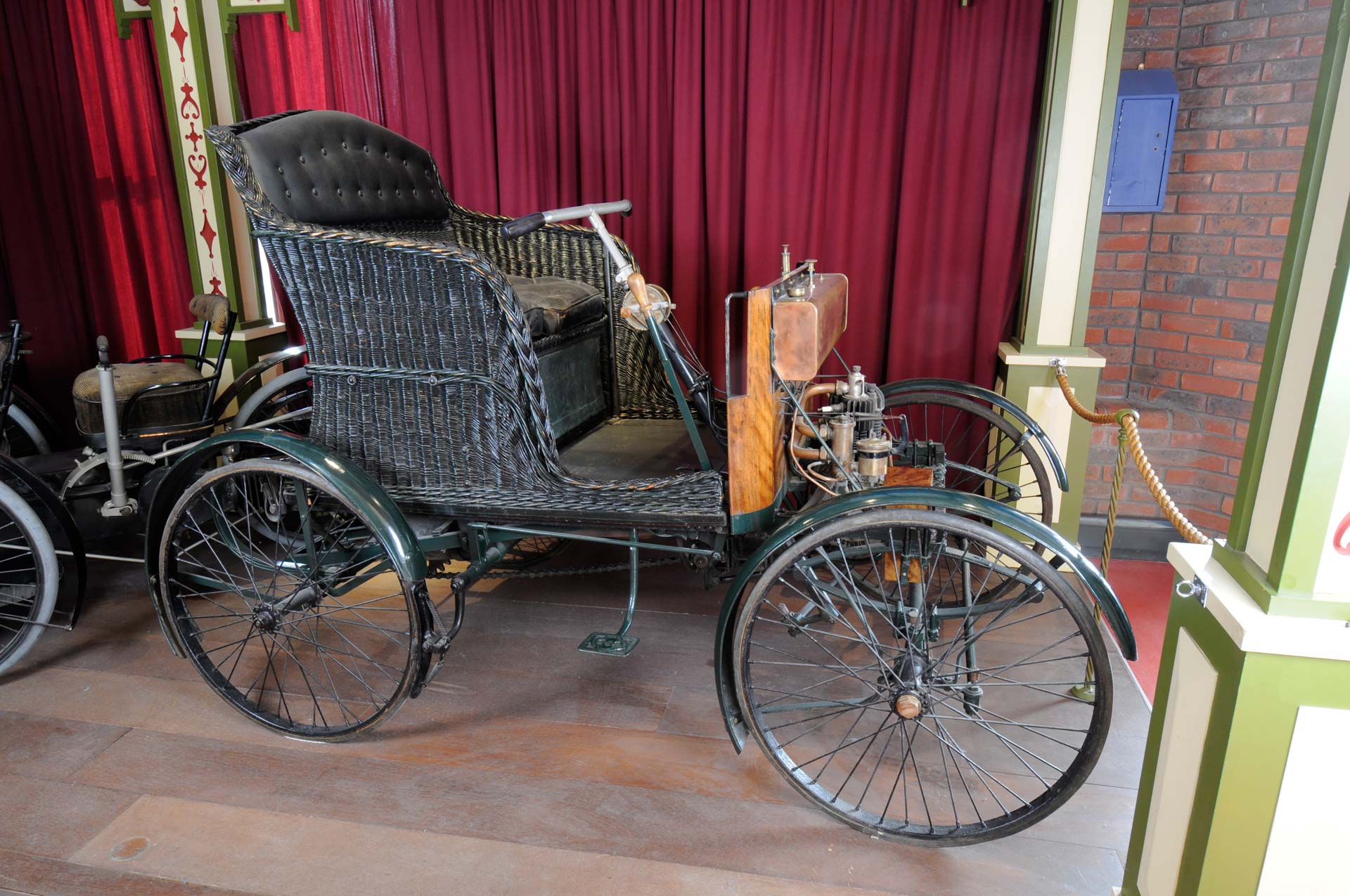Vintage cars
We have some great historic vehicles in our collections in the Motor Car Gallery. Let us transport you through the history of the car – all the way back to the 1900 Motor Show.
Our collection includes rare veteran motor cars from 1897 onwards, including the revolutionary Système Panhard.

The Dawn of Motoring
Before 1896, motoring in the U.K. had a tough time. The government was under pressure from the developers of Britain's growing railway network. As a result, they introduced the Locomotive Act in 1865, which brought in all kinds of vehicle regulations.
Strict rules limited motor vehicles to a top speed of only four miles per hour in the countryside. While in towns, the limit was just two miles per hour. Each vehicle also needed someone to walk sixty yards in front waving a red flag or lantern to warn pedestrians and horse riders.
Making Progress
Most of the innovations in car design were happening in France and Germany. In 1891, French engineers Rene Levassor and Rene Panhard were eager to try something new. They fit the successful, German-made 6hp Daimler Phoenix engine to a car they designed. This experiment became the Système Panhard. Their design was so revolutionary it influenced car design well into the late-twentieth century.
There's an example of an 1899-built Système Panhard in our collection. The vehicle has revolutionary features, including a front-mounted engine with rear-wheel drive and an in-line sliding gear transmission.
Stepping up a gear
As the popularity of motoring spread across the English Channel, pressure from motorists led to a relaxation of the rules. From 1878, there was no longer a need for a red flag-waver. Then in 1896, the Locomotives on Highways Act came in. This new Act meant smaller private motor vehicles were now free of the most strict regulations. The government also raised the speed limit to a whopping 14 mph! The era of British motoring was finally born, and car ownership increased dramatically.
The late nineteenth and early twentieth centuries were exciting times for car engineers. Small-scale precision engineering allowed them to experiment with replacements for inefficient steam-powered vehicles. Compared to steam and petrol, electric cars (such as the Cleveland Electric Buggy) were mechanically simple. They were also easy to drive and quiet. However, the batteries were heavy and took a long time to charge. The owners of electric vehicles wouldn't dare venture far from home as their range was so limited. Instead, the power of the petrol engine won out over its rivals, steam and electricity.
Laws and Licensing
In 1903 the government introduced The Motor Car Act to regulate a growing motoring population. The Act made reckless driving a crime and set penalties for those found guilty.
The Act also required owners to register their vehicles with their local council. Each car received a unique number which had to be displayed on the vehicle. Drivers also had to be licensed, although there was no test. Instead, the driver paid the council a fee of five shillings.
Hull's motorcars
In 1925, pioneering curator Thomas Shepherd acquired nine motor vehicles for Hull's collections. These came from a private collection in London. At the time, museums had little demand for these cars. But Shepherd knew that one day, these early examples would be very important. Thanks to his vision, our collection tells the story of the early days of motoring and attracts visitors from all over the world.

